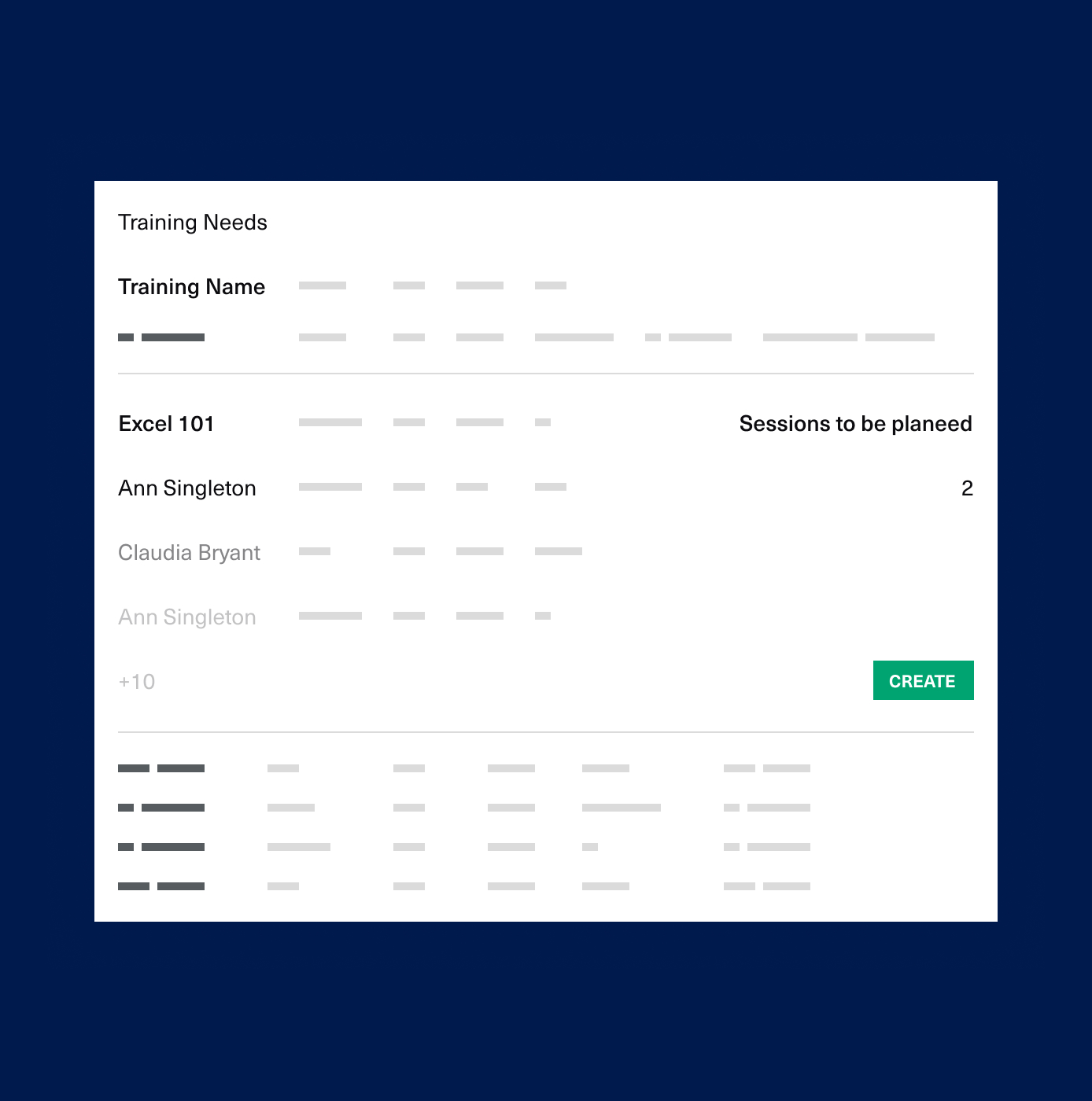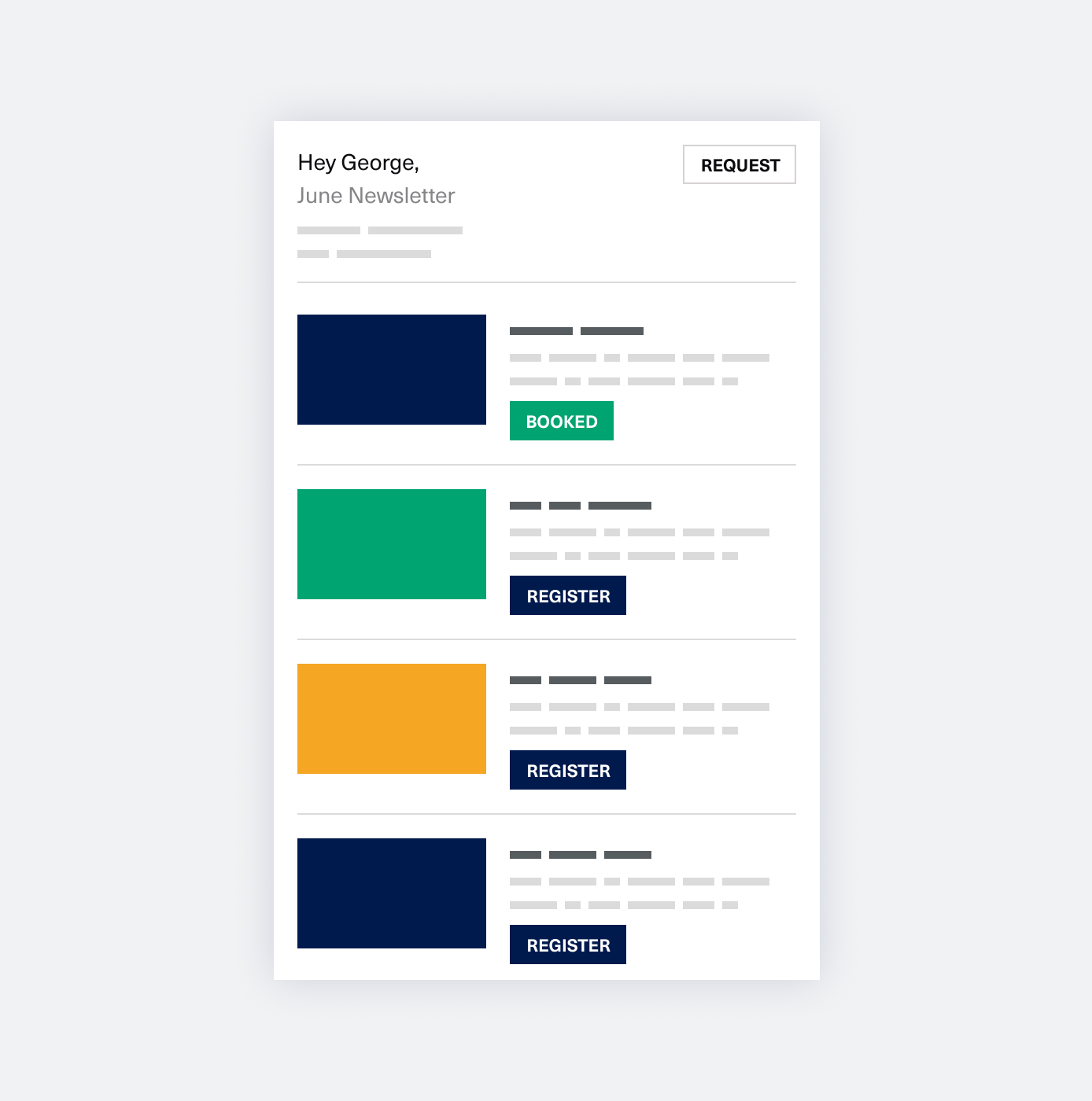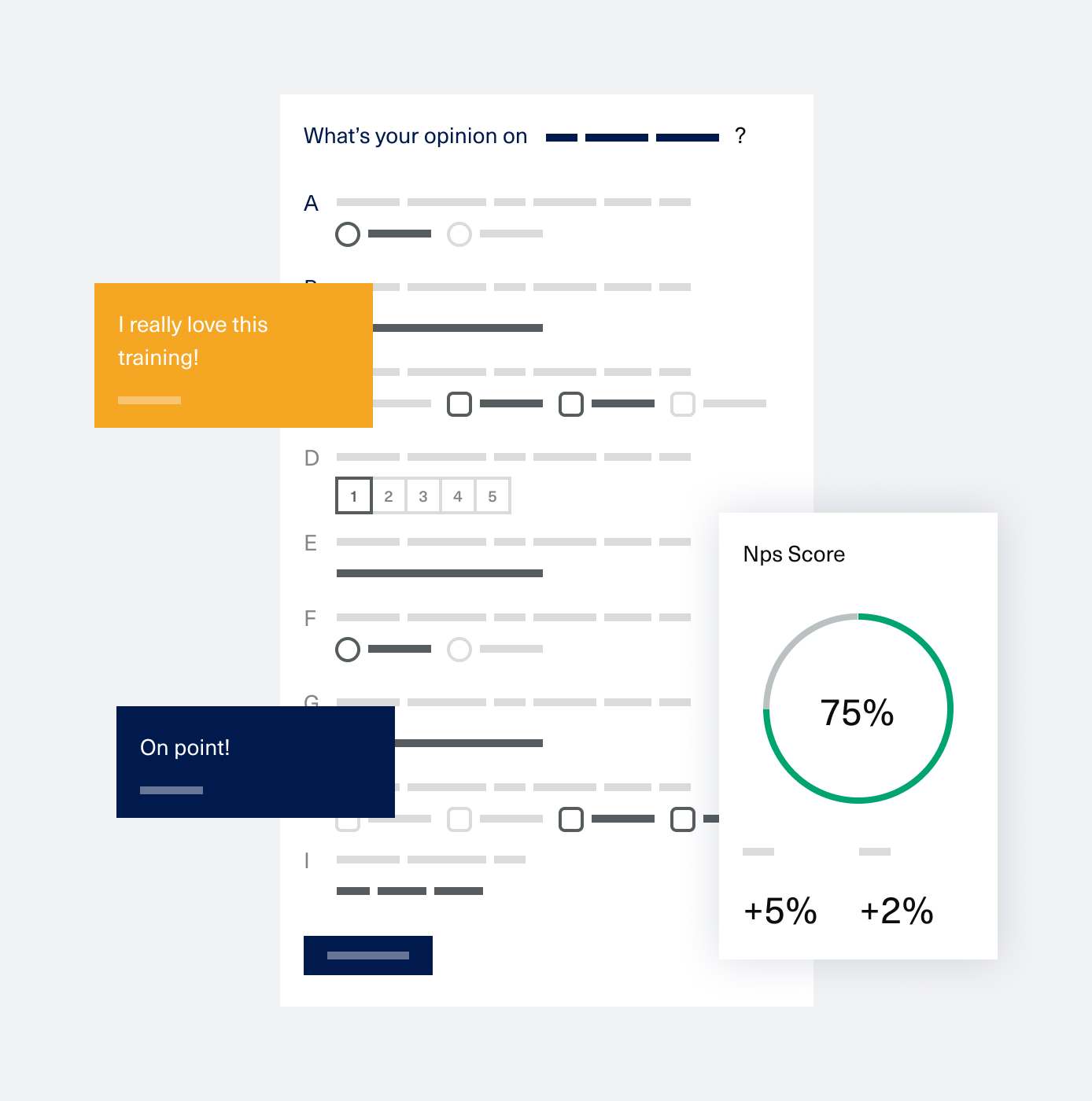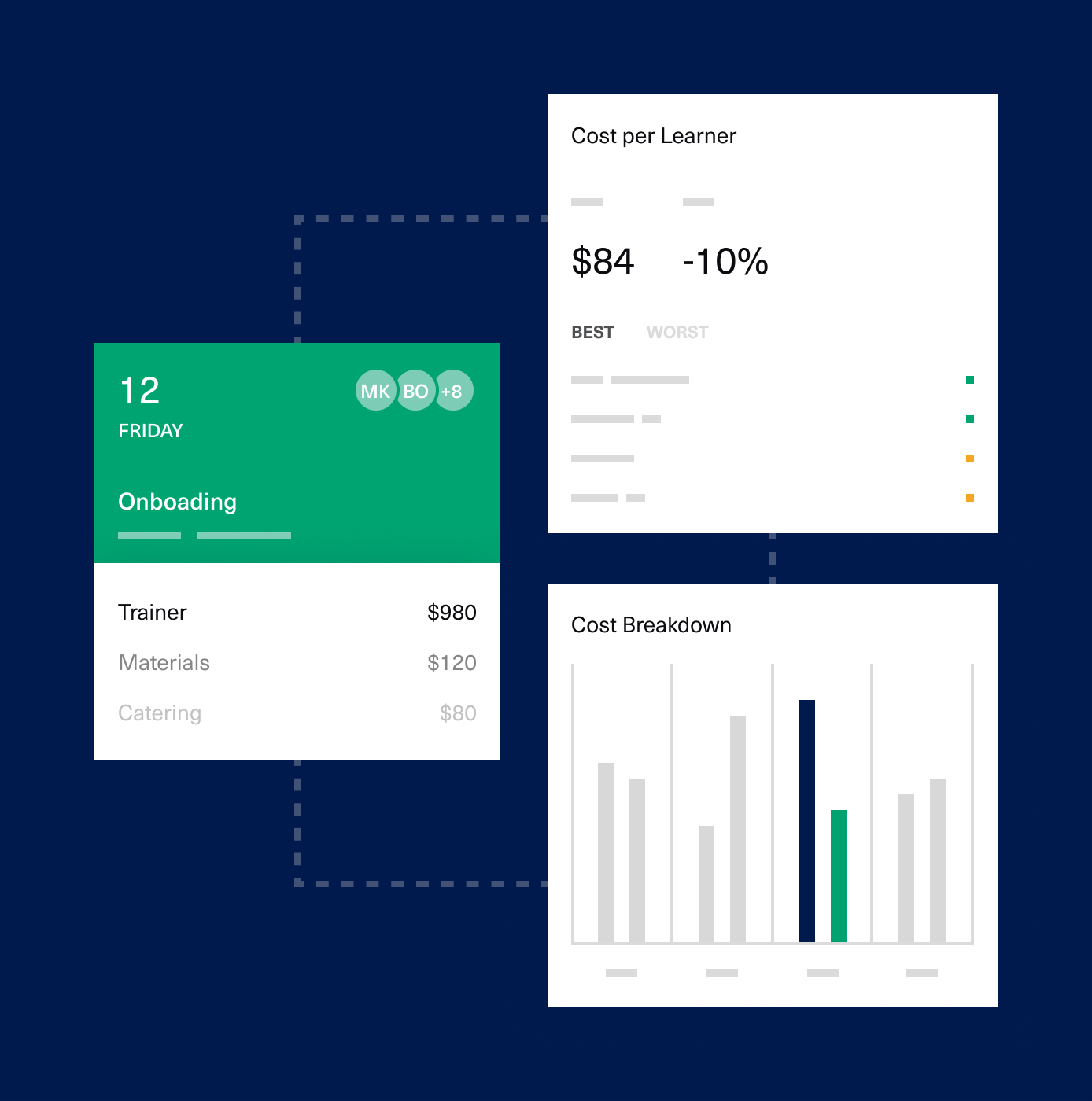Highlights:
* Impact is the goal of L&D. Content creation and delivery are tools to reach this goal.
* As L&D professionals and teams, you should clearly understand why you choose a specific technology and learning design approach. You need to be intentional and purposeful in creating your learning ecosystem.
* Spending the learning budget on solving the right problem is more important than your first-order layer of issues. If you’re looking for faster ways to create content, but you still don’t know if your current content is measurably effective, then solve that problem first.
* Data literacy is a crucial skill for L&D professionals – not to the extent of becoming an expert, but to at least grasp how to measure and evaluate effectiveness.
* What happens on the job after the learning is completed is the end goal of a learning intervention. This is the most important thing to focus on, and you should work back from that to build your L&D strategy, ecosystem, and, ultimately, your learning tech stack.
* The first thing to do is understand the jobs to be done and where people have difficulties executing the work.
* If you discover that a learning intervention is the needed solution, the minimum you can do in designing that learning experience (especially taking LTEM into account) is to implement productive breaks from learning.
* Allow learners to pause learning and practice, “do the task and come back,” or at least build in knowledge checklists or quizzes throughout the content delivery.
* The more you give a learner opportunities to put the information into practice, the higher the learning effectiveness.
* Your learning tech stack should support the possibility of creating and delivering learning experiences, as well as the ability to capture data during both learning and practicing.
* Once you can capture this information (aka these data points), you can interpret the data obtained and use it to measure the effectiveness of learning and its impact on the business – essentially, you can measure the learning ROI.
* For example, to start implementing LTEM, you first need to understand the underlying data-related work:
– How do you define effectiveness?
– What data do you plan to gather and measure?
– What are the data sources?
– How can you build data-measuring points in your learning design strategy?
Highlights:
* Perform discovery interviews to learn as much as possible about the new company you are joining or to look at your current company without past biases influencing you.
* L&D is a support function, so the L&D person must improve their business acumen; this is a key factor in your future effectiveness in supporting this company.
* It’s easier to start fresh, in a new organization, as opposed to growing internally into an L&D Management role because you don’t have the same blindspots about the business. Another benefit is that outsiders tend to be perceived as having higher expertise in their domain, which makes it easier later to position L&D as a strategic partner to the business.
* Don’t dive into the needs analysis first; it’s far more important to understand the organization and what kind of strategic learning direction it can take.
* Map out your outcomes from the discovery interviews; you will start noticing patterns that will later inform your L&D strategy.
* Focus on your stakeholders’ current workflows, tasks, challenges, and behaviors instead of telling them what L&D can help with. This way, you’ll avoid biasing your conversation partners towards offering you L&D-focused answers (avoid the “I need training on time management” type of requests).
* Start defining your future L&D strategy and validate with the business if you are going in the right direction.
* Identify quick wins and take action in the first 100 days to show that you are not just asking questions but also providing results.
* Avoid creating expectations and over-promising early on. Don’t take it personally if some of your ideas won’t come to life or certain business stakeholders don’t want L&D’s help at this early stage; there will be opportunities to collaborate later.
A phrasing suggestion to avoid creating expectations during your discovery interviews:
*Disclaimer – this is not yet a need analysis – let’s get to know each other and see where we can cooperate.
My job is to create the underlying fundaments for learning and knowledge exchange to happen organically and support and drive any formalized learning initiatives with evidence-based solutions.
Questions to ask your organization during the first “reconnaissance mission”:
1. 1-sentence description – what’s your job:
2. 1-sentence description – what does your product/service do:
3. Daily tasks:
4. Difficulties:
5. Intersection with other depts.:
6. Which skills are crucial for your job/your team’s job?
7. One thing to change about the way the company operates that would improve the area?
8. What does organizational learning mean for you?
9. How do you learn?
10. What do you think my role can help you with? (props to Donald Taylor for flipping this question around in a way that prevents creating expectations)

Course Library and Assignments
Create and maintain your company’s catalog and advertise it to your employees. Assign courses and pre-work, manage materials, and configure all of the pre-requisites for a specific course.

Live Training
Have a real-time overview of your training plan. Create, schedule, and track in-person or remote training events. Register participants, mark attendance, and automate the pre- and post-event communication.

Waitlists and Approval Flows
Forget about manually managing your waitlists and approval flows. Your L&D team doesn’t need to constantly go back and forth to handle last minute cancellations and unresponsive managers.

Training Needs
Move as fast as your organization needs you to. Plan training events rapidly by looking directly at the real-time training requests submitted by your department, line managers, or learners.

Training Newsletters
Automate communication with learners. With our beautifully designed training newsletters, your learners are notified about new opportunities for learning and professional development.

Feedback Collection
Gather in-the-moment feedback from your training participants, to get actionable information that improves your learning offer and to get more engaged audiences.

Financials Tracking
Track training event expenses in real-time. Add delivery costs, venue fees, and others as soon as they are paid, so you don’t have to go through piles of paperwork later. Extract info such as price per learner, business unit budget, cost breakdown, financial efficiency, etc., in seconds.

Learning Paths
Use learning items as building blocks to create targeted learning programs. Organize your learning content to satisfy a multitude of business requirements (such as a new job role, a program that the employee must go through).

Online Content
Publish your learning materials (SCORM, PDF, video, etc.) and send them to your learning audiences.

Smart Groups
Assign learners to custom groups automatically, so they have access to the right learning at the right time.

Custom Reports
Instantly see and share the data that matters with the help of automated reports. Gain visibility over your training operations using fully detailed reports.

Metrics & Trends
Get a real-time overview of what’s up, what’s next, and what’s left to do for the L&D department. See the data change over time in Nifty’s intuitive Analytics dashboard.

Regulatory Compliance
Navigate local, national, and international learning requirements with automated tools and reports that take the effort out of compliance, wherever or whoever you’re training.

Single Sign-On
Simplify your team’s user management and access.

World-class Security
Securely manage your most valuable asset. However large or small your training database is, we’ve got the controls in place to handle your employees’ training data safely.

Onboarding and Implementation
Our dedicated product specialists will have your teams up and running in days, not months — and will keep being available to answer questions at any time.

Premier Support
Every Nifty Learning customer has access to our Customer Success team to create, build, and deploy great learning experiences.

Integrations
We provide an integration API, and we can integrate with any of our customer’s 3rd party systems (HR system, ERP, CRM, calendar, room booking system, content provers, learning platforms, etc.) to provide a seamless merge between our platform and your current tech stack.

Automation
The platform allows the L&D manager to decide how much of the workflow can be automated.
Either fully automated actions, where the L&D manager only adds a new session and the platform does the rest until completion, or manually managing each step of the session management process.


















